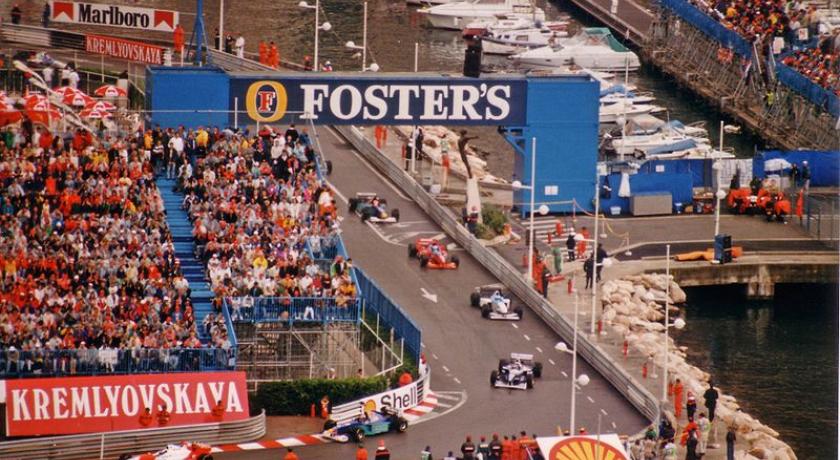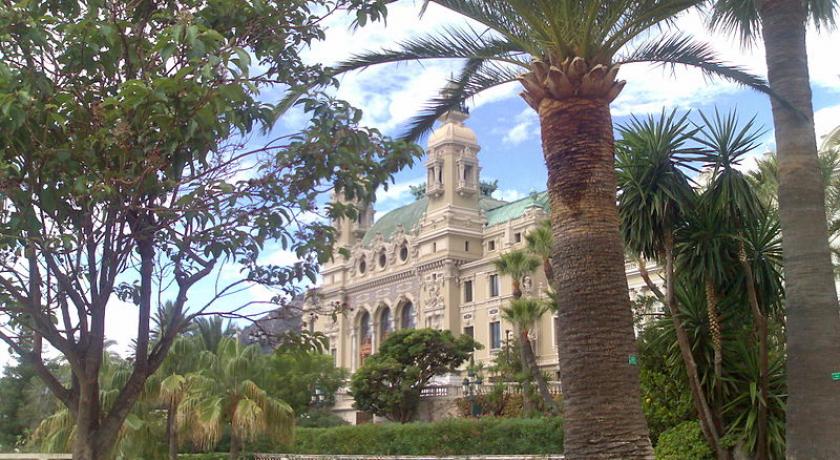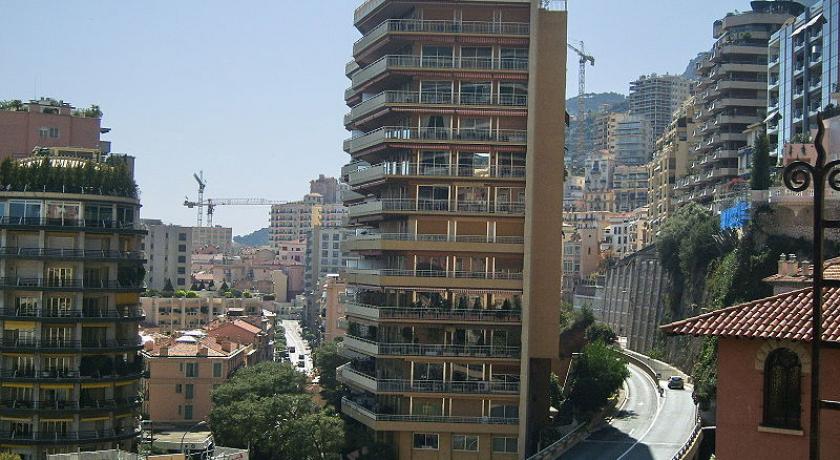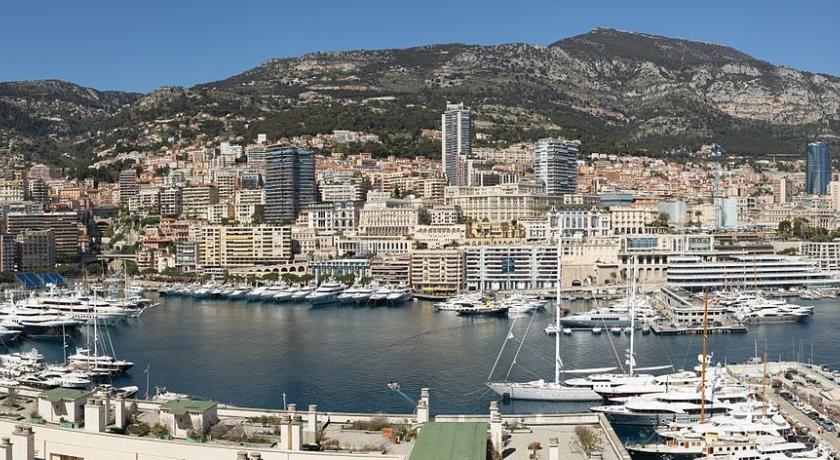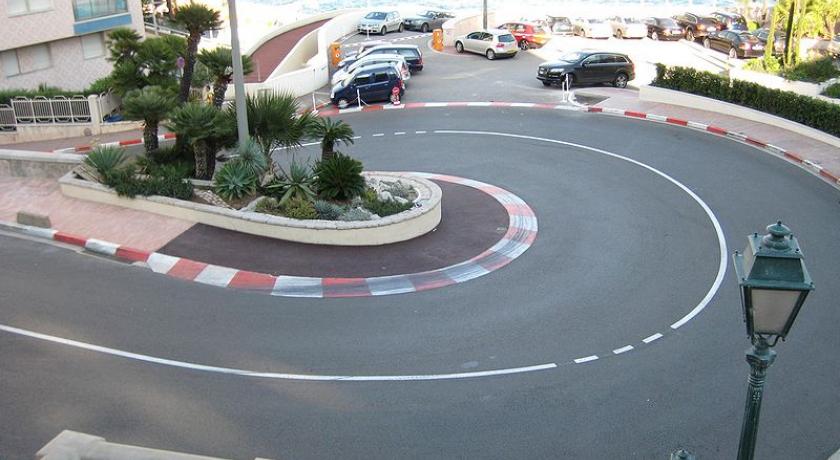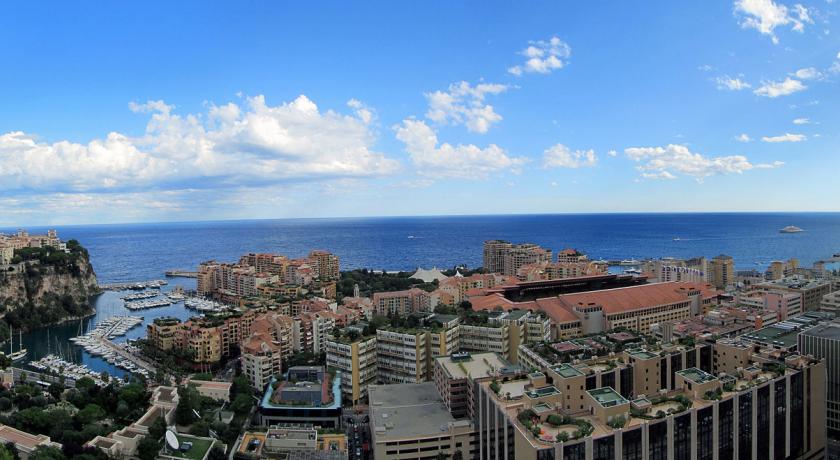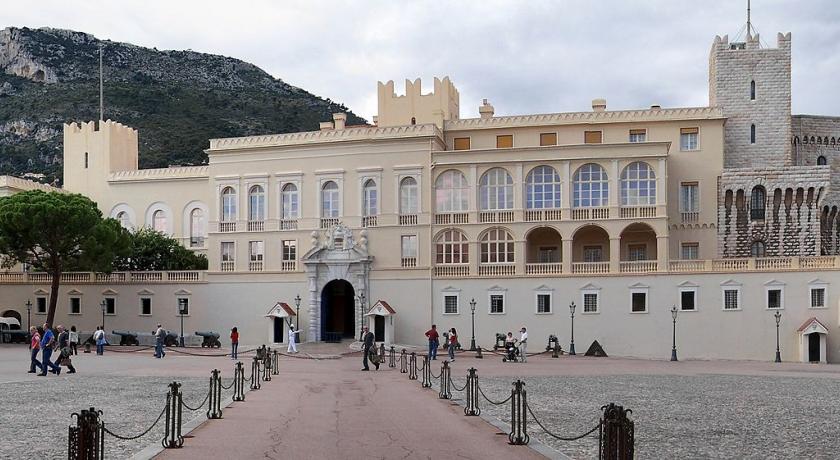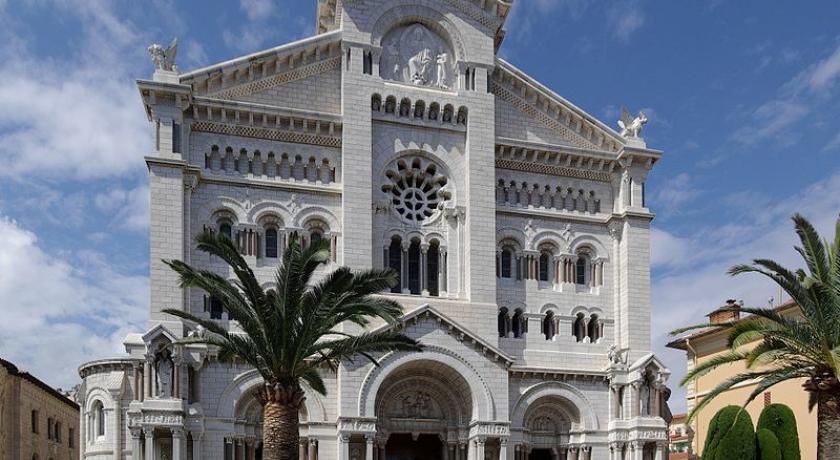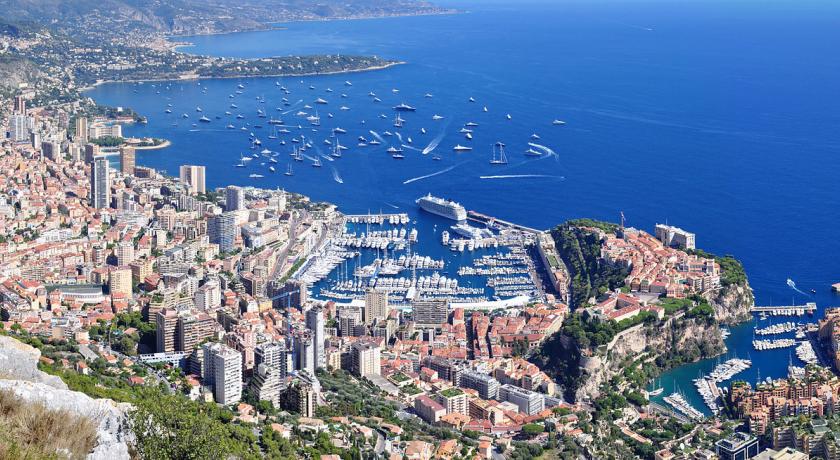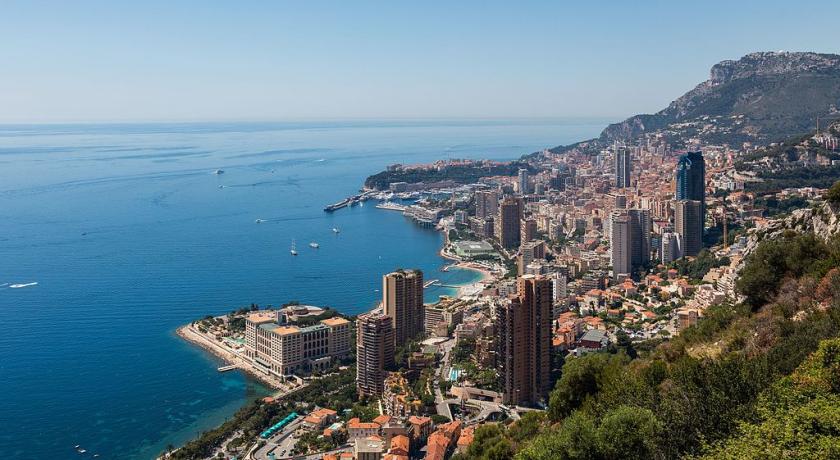Guide description
Monaco, officially the Principality of Monaco (French: Principauté de Monaco), is a sovereign city-state and microstate, located on the French Riviera in Western Europe. France borders the country on three sides while the other side borders the Mediterranean Sea. Monaco has an area of 2.02 km2 (0.78 sq mi) and a population of about 38,400 according to the last census of 2015. With 19,009 inhabitants per km², it is the second smallest and the most densely populated country in the world. Monaco has a land border of 5.47 km (3.40 mi), a coastline of 3.83 km (2.38 mi), and a width that varies between 1,700 and 349 m (1,859 and 382 yd). The highest point in the country is a narrow pathway named Chemin des Révoires on the slopes of Mont Agel, in the Les Révoires Ward, which is 161 metres (528 feet) above sea level. Monaco's most populous Quartier is Monte Carlo and the most populous Ward is Larvotto/Bas Moulins. Through land reclamation, Monaco's land mass has expanded by twenty percent; in 2005, it had an area of only 1.974 km2 (0.762 sq mi). Monaco is known as a playground for the rich and famous, due to its tax laws. In 2014, it was noted about 30% of the population was made up of millionaires, more than in Zürich or Geneva.
Monaco is a principality governed under a form of constitutional monarchy, with Prince Albert II as head of state. Although Prince Albert II is a constitutional monarch, he wields immense political power. The House of Grimaldi have ruled Monaco, with brief interruptions, since 1297. The official language is French, but Monégasque, Italian, and English are widely spoken and understood. The state's sovereignty was officially recognized by the Franco-Monegasque Treaty of 1861, with Monaco becoming a full United Nations voting member in 1993. Despite Monaco's independence and separate foreign policy, its defense is the responsibility of France. However, Monaco does maintain two small military units.
Economic development was spurred in the late 19th century with the opening of the country's first casino, Monte Carlo, and a railway connection to Paris. Since then, Monaco's mild climate, scenery, and gambling facilities have contributed to the principality's status as a tourist destination and recreation center for the rich. In more recent years, Monaco has become a major banking center and has sought to diversify its economy into services and small, high-value-added, non-polluting industries. The state has no income tax, low business taxes, and is well known for being a tax haven. It is also the host of the annual street circuit motor race Monaco Grand Prix, one of the original Grands Prix of Formula One.
Monaco is not formally a part of the European Union (EU), but it participates in certain EU policies, including customs and border controls. Through its relationship with France, Monaco uses the euro as its sole currency (prior to this it used the Monégasque franc). Monaco joined the Council of Europe in 2004. It is a member of the Organisation Internationale de la Francophonie (OIF).
Architecture
Monaco exhibits a wide range of architecture, but the principality's signature style, particularly in Monte-Carlo, is that of the Belle Epoque. It finds its most florid expression in the 1878-9 Casino and Grand Concert Hall created by Charles Garnier and Jules Dutrou. Decorative elements including turrets, balconies, pinnacles, multi-coloured ceramics and caryatids and borrowed and blended to create a picturesque fantasy of pleasure and luxury, and an alluring expression of how Monaco sought, and still seeks, to portray itself. This capriccio of French, Italian and Spanish elements was incorporated into hacienda villas and apartments. Following major development in the 1970s, Prince Rainier III banned high rise development in the principality. However his successor, Prince Albert II, overturned this Sovereign Order.[99] In recent years the accelerating demolition of Monaco's architectural heritage, including its single-family villas, has created dismay. The principality currently has no heritage protection legislation.
Geography
Monaco is a sovereign city state, with 5 Quartiers and 10 Wards, located on the French Riviera in Western Europe. It is bordered by France's Alpes-Maritimes département on three sides, with one side bordering the Mediterranean Sea. Its center is about 16 km (9.9 mi) from Italy and only 13 km (8.1 mi) northeast of Nice, France. It has an area of 2.02 km2 (0.78 sq mi) or 202 hectares (500 acres) and a population of 38,400, making Monaco the second smallest and the most densely populated country in the world. The country has a land border of only 5.47 km (3.40 mi), a coastline of 3.83 km (2.38 mi), a maritime claim that extends 22.2 kilometres (13.8 mi), and a width that varies between 1,700 and 349 m (5,577 and 1,145 ft).
The highest point in the country is at the access to the Patio Palace residential building (Jardin Exotique district) from the D6007 (Moyenne Corniche street) at 164.4 metres (539 feet) above sea level. The lowest point in the country is the Mediterranean Sea. Saint-Jean is the longest flowing body of water, around 0.19 km (0.12 miles) in length, and Fontvieille is the largest lake, approximately 0.5 ha (1.24 acres) in size. Monaco's most populated Quartier is Monte Carlo, and the most populated Ward is Larvotto/Bas Moulins. After a recent expansion of Port Hercules, Monaco's total area grew to 2.02 km2(0.78 sq mi) or 202 hectares (500 acres); consequently, new plans have been approved to extend the district of Fontvieille by 0.08 km2 (0.031 sq mi) or 8 hectares (20 acres), with land reclaimed from the Mediterranean Sea. Current land reclamation projects include extending the district of Fontvieille. There are two ports in Monaco, Hercules and Port Fontvieille. Monaco's only natural resource is fishing; with almost the entire country being an urban area, Monaco lacks any sort of commercial agriculture industry. There is a neighboring French port called Cap d'Ail that is near Monaco.
History
19th century
Between 1793 and 1814 Monaco was occupied by the French (in this period much of Europe had been overrun by French under command of Napoleon). The principality was reestablished in 1814 only to be designated a protectorate of the Kingdom of Sardinia by the Congress of Vienna in 1815. Monaco remained in this position until 1860 when, by the Treaty of Turin, the Sardinian forces pulled out of the principality and the surrounding county of Nice (as well as Savoy) was ceded to France. Monaco became a French protectorate once again. Before this time there was unrest in Menton and Roquebrune, where the townspeople had become weary of heavy taxation by the Grimaldi family. They declared their independence, hoping for annexation by Sardinia. France protested. The unrest continued until Charles III gave up his claim to the two mainland towns (some 95% of the principality at the time) that had been ruled by the Grimaldi family for over 500 years. These were ceded to France in return for 4,100,000 francs. The transfer and Monaco's sovereignty were recognized by the Franco-Monegasque Treaty of 1861. In 1869, the principality stopped collecting income tax from its residents—an indulgence the Grimaldi family could afford to entertain thanks solely to the extraordinary success of the casino. This made Monaco not only a playground for the rich, but a favored place for them to live.
20th century
Until the Monegasque Revolution of 1910 forced the adoption of the 1911 constitution, the princes of Monaco were absolute rulers. The new constitution, however, barely reduced the autocratic rule of the Grimaldi family and Prince Albert I soon suspended it during the First World War.
In July 1918, the Franco-Monegasque Treaty was signed, providing for limited French protection over Monaco. The treaty, endorsed in 1919 by the Treaty of Versailles, established that Monegasque international policy would be aligned with French political, military, and economic interests, and resolved the Monaco Succession Crisis.
In 1943, the Italian Army invaded and occupied Monaco, forming a fascist administration. Shortly thereafter, following the collapse of Mussolini, the German Wehrmacht occupied Monaco and the Nazi deportation of the Jewish population began. René Blum, the prominent French Jew who founded the Ballet de l'Opera in Monte Carlo, was arrested in his Paris home and held in the Drancy deportation camp outside the French capital before being transported to the Auschwitz concentration camp, where he was later killed. Blum's colleague Raoul Gunsbourg, the director of the Opéra de Monte-Carlo, helped by the French Resistance, escaped arrest and fled to Switzerland. In August 1944, the Germans executed René Borghini, Joseph-Henri Lajoux and Esther Poggio, who were Resistance leaders.
Rainier III, who ruled until 2005, succeeded to the throne following the death of his grandfather, Prince Louis II, in 1949. On 19 April 1956, Prince Rainier married the American actress Grace Kelly; the event was widely televised and covered in the popular press, focusing the world's attention on the tiny principality.
A 1962 amendment to the constitution abolished capital punishment, provided for women's suffrage, and established a Supreme Court of Monaco to guarantee fundamental liberties.
In 1963, a crisis developed when Charles de Gaulle blockaded Monaco, angered by its status as a tax haven for wealthy French. The 2014 film Grace of Monaco is loosely based on this crisis.
In 1993, the Principality of Monaco became a member of the United Nations, with full voting rights.
21st century
In 2002, a new treaty between France and Monaco specified that, should there be no heirs to carry on the Grimaldi dynasty, the principality would still remain an independent nation rather than revert to France. Monaco's military defence, however, is still the responsibility of France.
On 31 March 2005, Rainier III, who was too ill to exercise his duties, relinquished them to his only son and heir, Albert. He died six days later, after a reign of 56 years, with his son succeeding him as Albert II, Sovereign Prince of Monaco.
Following a period of official mourning, Prince Albert II formally assumed the princely crown on 12 July 2005, in a celebration that began with a solemn Mass at Saint Nicholas Cathedral, where his father had been buried three months earlier. His accession to the Monégasque throne was a two-step event with a further ceremony, drawing heads of state for an elaborate reception, held on 18 November 2005, at the historic Prince's Palace in Monaco-Ville.
On 27 August 2015, Albert II apologised for Monaco's role during World War II in facilitating the deportation of a total of 90 Jews and resistance fighters, of whom only nine survived. "We committed the irreparable in handing over to the neighbouring authorities women, men and a child who had taken refuge with us to escape the persecutions they had suffered in France," Albert said at a ceremony in which a monument to the victims was unveiled at the Monaco cemetery. "In distress, they came specifically to take shelter with us, thinking they would find neutrality."
In 2015, Monaco unanimously approved a modest land reclamation expansion intended primarily for some desperately needed housing and a small green/park area. Monaco had previously considered an expansion in 2008, but called it off. The plan is for about six hectares of apartment buildings, parks, shops and offices for about 1 billion euros for the land. The development will be adjacent to the Larvotto district and also will include a small marina.[49][50] There were four main proposals, and the final mix of use will be finalised as the development progresses. The name for the new district is Anse du Portier.
Language
The official language of Monaco is French, while Italian is spoken by the principality's sizeable community from Italy. English is used by American, British, Canadian and Irish residents.
The traditional national language is Monégasque, a variety of Ligurian, now spoken by only a minority of residents and as a common second language by many native residents. In Monaco-Ville, street signs are printed in both French and Monégasque.
Religion
Roman Catholicism
The official religion is Roman Catholicism, with freedom of other religions guaranteed by the constitution. There are five Roman Catholic parish churches in Monaco and one cathedral, which is the see of the archbishop of Monaco.
The diocese, which has existed since the mid-19th century, was raised to a non-metropolitan archbishopric in 1981 as the Archdiocese of Monaco and remains exempt (i.e. immediately subject to the Holy See). The patron saint is Saint Devota.
Christians comprise a total of 83.2% of Monaco's population.
Protestantism
According to Monaco 2012 International Religious Freedom Report, Protestants are the second largest group after Roman Catholics. There are various Evangelical Protestant communities that gather periodically. The report states that there are two Protestant churches, including the local Anglican church and a Reformed church.
Anglicanism
There is one Anglican church (St. Paul's Church), located in the Avenue de Grande Bretagne in Monte Carlo. In 2007 this had a formal membership of 135 Anglicans resident in the principality, but was also serving a considerably larger number of Anglicans temporarily in the country, mostly as tourists. The church site also accommodates an English language library of over 3,000 books. The church is part of the Anglican Diocese in Europe.
Greek Orthodoxy
Monaco's 2012 International Religious Freedom Report states that there is one Greek Orthodox Church in Monaco.
Judaism
The Association Culturelle Israélite de Monaco (founded in 1948) is a converted house containing a synagogue, a community Hebrew school, and a kosher food shop, located in Monte Carlo. The community mainly consists of retired Jews from Britain (40%) and North Africa. Two-thirds of the Jewish population is Sephardic, mainly from North Africa, while the other third is Ashkenazi.
Islam
The Muslim population of Monaco consists of about 280 people, most of whom are exclusively residents, not citizens. The majority of the Muslim population of Monaco are Arabs, though there are smaller Turkish minorities as well. Monaco does not have any official mosques. There is a Muslim mosque in nearby Beausoleil, France, within easy walking distance of Monaco.
Sports
Formula One
Since 1929, the Monaco Grand Prix has been held annually in the streets of Monaco. It is widely considered to be one of the most prestigious automobile races in the world. The erection of the Circuit de Monaco takes six weeks to complete and the removal after the race takes another three weeks. The circuit is incredibly narrow and tight and its tunnel, tight corners and many elevation changes make it perhaps the most demanding Formula One track. Driver Nelson Piquet compared driving the circuit to "riding a bicycle around your living room".
Despite the challenging nature of the course it has only had one fatality, Lorenzo Bandini, who crashed, burned and died three days later from his injuries in 1967. Two other drivers had lucky escapes after they crashed into the harbour, the most famous being Alberto Ascari in the 1955 Monaco Grand Prix and Paul Hawkins, during the 1965 race.
Monte Carlo Rally
Since 1911 part of the Monte Carlo Rally has been held in the principality, originally held at the behest of Prince Albert I. Like the Grand Prix, the rally is organised by Automobile Club de Monaco. It has long been considered to be one of the toughest and most prestigious events in rallying and from 1973 to 2008 was the opening round of the World Rally Championship (WRC). From 2009 until 2011, the rally served as the opening round of the Intercontinental Rally Challenge. The rally returned to the WRC calendar in 2012 and has been held annually since. Due to Monaco's limited size, all but the whole rally is held in French territory.
Access price
Supplement per child : €0 (฿0) (maximum of 0 childs)


